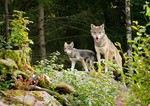 Chemical signaling in plant and animal interactions
Chemical signaling in plant and animal interactions
Guest Edited by Deguang Liu and Amélie Saunier
 Ecosystem restoration, regeneration and rewilding
Ecosystem restoration, regeneration and rewilding
Guest Edited by Carmel McDougall and Nancy Shackelford
 Automated and remote biodiversity monitoring
Automated and remote biodiversity monitoring
Guest Edited by Luiz Silva and Jenni Raitoharju
 Biological invasions
Biological invasions
Guest Edited by Gary Bucciarelli, Victoria Dominguez Almela, and Josie South
 Citizen science in ecological research
Citizen science in ecological research
Guest Edited by Gerid Hager and Benjamin Kent Haywood
 Ecology and evolution of plant–pollinator interactions
Ecology and evolution of plant–pollinator interactions
Guest Edited by Jay D. Evans and Coline Jaworski
 Evolution of vertebrate flight
Evolution of vertebrate flight
Guest Edited by Michael Pittman, Thomas Alexander Dececchi, and Norberto Pedro Giannini.



